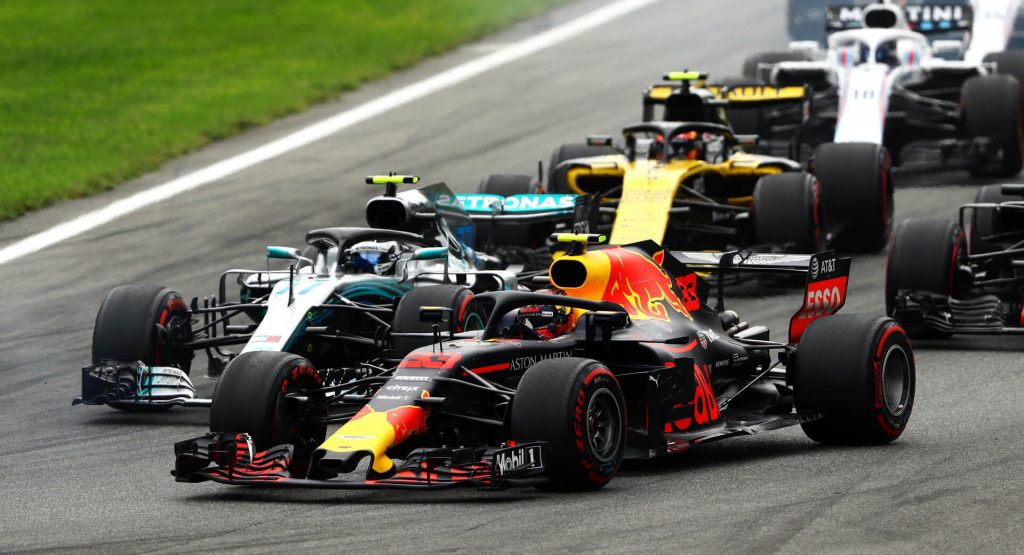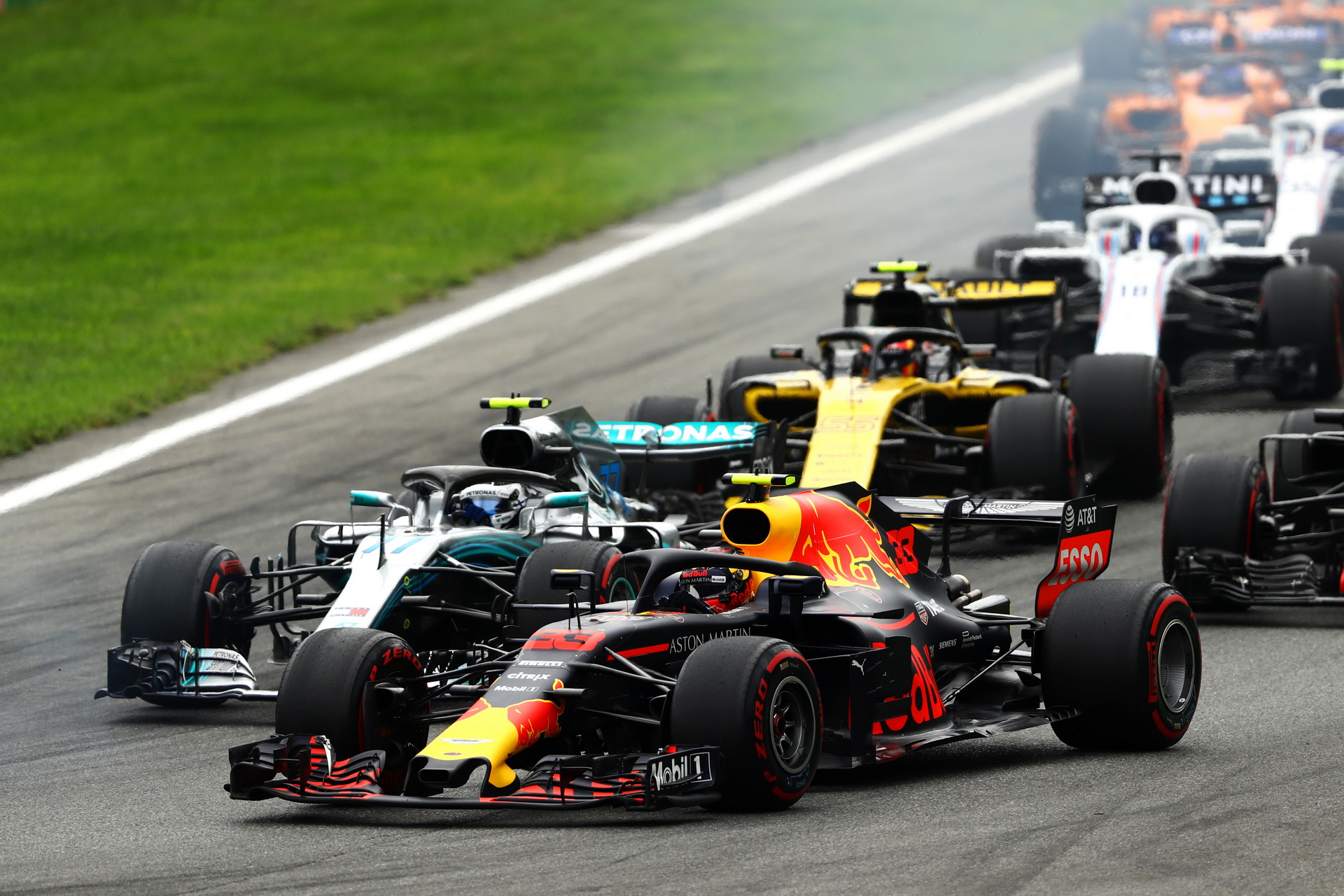Breaking through in the world of Formula 1 isn’t as easy as some young drivers make it look, as there are still plenty of talented names left on the sidelines every year.
Youngsters such as F2 championship leader George Russell are in a bit of a limbo as Mercedes have failed to secure him an F1 seat for 2019 as of right now. Current Force India driver Esteban Ocon is in a similar situation, as his spot will likely go to Lance Stroll next season.
Of course, this could all be a non-issue if the FIA simply allowed for more cars to be placed on the grid.
The concept of three-car teams is nothing new. F1 has been toying with the idea for quite some time and back in the days of customer cars, like in the 60s and 70s, teams were lining up four or even five cars during races.
So then should this trend be allowed to cycle back? According to F2’s George Russell, who told Autosport that F1 is “currently lacking at least two teams”, it definitely should.
“We only have 20 cars on the grid, as a young driver trying to break into that 20 is extremely difficult,” said Russell. “I think the idea of a third car, or something along those lines, is a very good idea.”
“You sometimes see the pay drivers getting into Formula 1, and potentially they could come in for their home race: an Asian driver comes in for the Asian races, the American drivers come in for the American races and so on. It gives the likes of Mercedes, Ferrari and Red Bull the chance to throw their young drivers in without any major issues.”
Not so fast, George
On the opposite side of the spectrum are people such as Haas team principal Gunther Steiner, who thinks a third car would cause a distortion in the standings and confuse fans.
“I’m not in agreement with a third car because it would confuse the whole picture,” said Steiner. “It would be very difficult to understand for the fans and new spectators that sometimes a third car could run. It would distort the actual championship, in my opinion. I think we need to sit back and come up with a better idea.”
“As it stands, we have no interest to field a third car. If somebody comes up and pays for it, yes we can consider it.”
We actually understand where Steiner is coming from. A midfield team such as Haas would struggle to secure strong grid positions if it had to battle even more cars fielded by the likes of Ferrari, Mercedes and Red Bull. Financially though, it probably wouldn’t be that big of an issue, as George Russell will happily point out.
“Formula 1 is an extremely expensive sport because of the development, not because of the actual cost of building the front wings or whatever. The money is spent in the wind tunnels, on designers’ salaries, the time and effort to design the cars. To make three wings instead of two is not going to be a huge additional cost. [Or] a third chassis compared to two.”
In the end, this seems to be more of a competitive issue than a financial one. A young driver employed by Mercedes such as Russell would obviously love to find himself on the grid, behind the wheel of a Mercedes. But what if you’re trying to break through behind the wheel of a car that’s currently under-performing such as a Williams? You would have to fight through even more superior cars to get in the top 10.
In fact, you could argue that Mercedes, Ferrari and Red Bull could secure the top 9 positions during races with ease, barring any incidents. That doesn’t sound like a lot of fun, does it?




